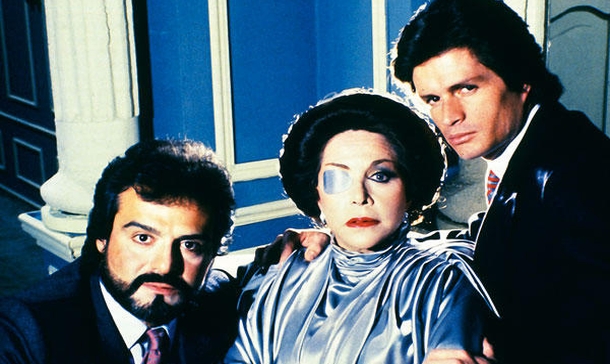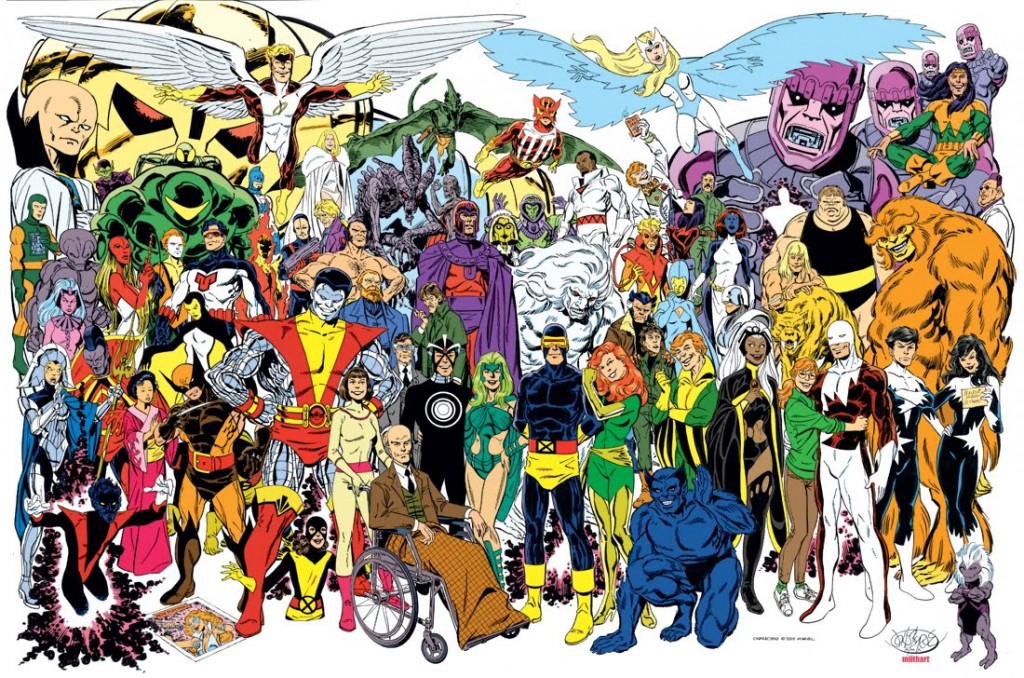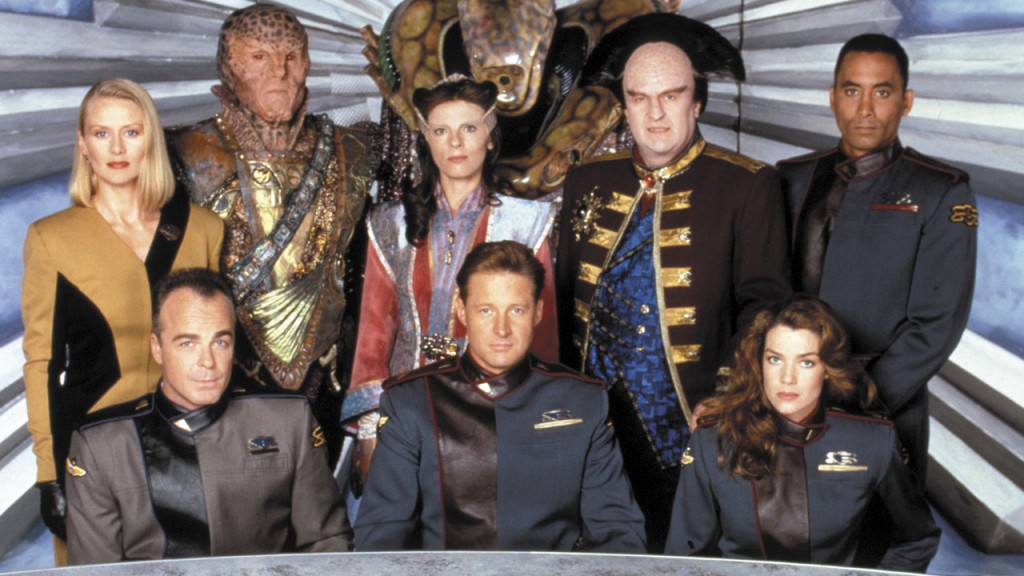As I write this post the end of the 26th day of August quickly approaches in Germany, but since I’ve take over the blog this month, we are running in Puerto Rico time and here it is still the 26th. Never mind the muffled cries from the basement, the Stargazer is ok!
Unlike the past two days, today’s topic for #RPGaDay2015 is something I talk about at length, inspiration! Read on…
Day 26 – Favorite inspiration for your game
If you’ve been reading my entries over the past weeks you’ll have doubtlessly discovered various inspirations, from movies to books, specific series and even toys for different genres, but if I try to identify larger inspirations that apply across all the different games I play I can pinpoint three major ones that played a role on my creative process, campaign creation and the dynamics of storytelling, and you may be surprised about some of them. Allow me to tackle them one at a time:
1 – Telenovelas!
Yes, telenovelas… As a young kid it was hard to avoid telenovelas in local television, they would take up a good block of programing, typically after noon, until children’s programing began and then another block after the news. In that respect, not much has change, only that today they show even MORE telenovelas. I grew up watching them, and loved them! I don’t watch them anymore, but they are still very popular.
While some will call them soap operas in Spanish, that’s not quite right. Unlike the endless soap operas that were so common the USA, telenovelas are, per the Wikipedia definition, “limited-run serial dramas”. They are shown daily and last for a few months, and are usually melodramatic and deal with common tropes that in many ways reinforce the conservative mores of the country where they are made (typically in Mexico, Venezuela and Brazil when I watched them, but these days there are mainly produced in Miami by Univision and Televisa as far as I know) although from what I hear some more modern issues are creeping in.
You may ask yourself; what about telenovelas inspired your games? First of all telenovelas have at their core very simple plots, despite being broadcast every day, they constantly restate plots and conflicts through character conversation, repetitive event, etc., so that casual viewers know what’s happening. I think that, even if we fancy ourselves the brilliant storytellers, our games are very episodic, oftentimes a week or more pass between the typical session, and our plots are oftentimes common tropes we rehash for different genres.
A small digression, I’m not trying to minimize the importance or the possibility of shared storytelling in our hobby, but for casual games, hack & slash games, or for just getting together with friends for a snack and some dice rolling, I don’t think the above characterization is wrong… Back to the post!
The repetition of important plot elements and the restatement of conflicts are important for our games, and the myriad ways telenovelas do this can be inspiration to remind our players just what is going on in game without hitting them over the head with a metaphorical bat (GMs, never hit your players, there are more of them and they’ll gang up on you). That and melodrama! Telenovelas are filled with unrequited affection, passion, chaste love, even in the raciest modern telenovelas most of the “heavy action” in the romantic department happens off camera, much like our games. For me inserting some of that interpersonal drama has been very useful as character motivation and for making the world seem real with shorthand.
From the telenovela Cuna de Lobos
Telenovelas have some of the best villains!
2 – Comics
I’ve written about comics as inspiration before, and despite not reading them as much as I used to, the typical comic storytelling tropes taught me a lot about pacing, excitement and the fact that when things slow down, the best way to add excitement is to throw in a fight.
The four color adventures I grew up reading in the 80s and 90s, mainly Marvel maintains such as X-Men and Avengers, were fun, over the top, and even when characters stopped to talk and ponder about their problems, a fight was always around the corner. Even I did continue reading into the much darker mid 90s and beyond, the angst of the X-men, the grand adventures of the Avengers, and the epic even such as Crisis on Infinite Earth, were influential in how I structured plot and story, especially the comics of Chris Claremont and their intricate backstories and drawn out situations that paid off many issues later.
The X-Men and many related character by John Byrne
Just as influential for me as Claremont!
So add in the episodic restatement of important conflicts/events and the melodrama of telenovelas, with the pacing and plotlines of comic books for the first two part of my trifecta of inspiration for my games. What’s the third? A TV show that to this day remains one of my favorites…
3- Babylon 5
Babylon 5 sprinkled the melodrama I enjoyed as a kid, with the plotting of exciting events, like big fights in comic books, with more cerebral issues and character driven arcs, all tied together into a larger tapestry, a complete story told over five seasons of television. Granted the variances brought by the business of TV hurt the series near the end, but despite any possible failings, it remains some of most fun I’ve had watching a series. It showed me the importance of foreshadowing, of focusing on personal drama in the context of larger stories, of destiny, or the burden of leadership, that even happy endings have a cost.
The show inspired my campaigns, showed the benefits of a long term planning in storytelling, and the intermingling of many complex plots, some of which cannot be resolved to satisfaction. In the universe of Babylon 5nstitutions fail, you have to fight for what you believe in, even at personal cost, and it’s ok to have a bittersweet ending. All that and more I learned from the series. I had been playing RPGs for some years when Babylon 5 was produced, but I still feel its indelible influence in my storytelling.
So those are my three big picture inspirations, telenovelas + comics + Babylon 5 = some pretty weird campaign, but we have fun playing them. Don’t let anybody tell you you’re doing it wrong as long as it is fun for everybody!
So what’s your inspiration for your games? Let us know in the comments. See you tomorrow!





I ran a game in the early 2000’s, that was heavily inspired/influenced by Babylon 5, and Zecharia Sitchen. Who is Sitchen? One of those “alternate history” and “aliens created us” types. He claimed to have used his knowledge of Sumerian and Semitic Languages to have deciphered how the Sumerian gods were actually aliens, and that they were also the basis of all of the major pagan mythologies (that the Egyptian Pantheon, for example, was just a translation of the Sumerian Pantheon; and the same with Greek and even Norse).
So. The Gods were actually advanced aliens. And the PCs are in a giant space station. Translated into early 3rd Edition D&D, the PCs were on the inside of a Dyson Sphere (and didn’t know it, initially), and the builders of the sphere were quasi-gods (was that the 3rd edition term? the step below DemiGods, where they have a value of 0 or something), that used both magic and technology (or rather, technological constructs created via magical methods) to build the sphere.
I used all kinds of Sitchen-isms in creating the pantheon of “Builders”, and various things learned from B5 (the slow reveal of the real plot of the series, etc.). That the REAL enemy was 3 layers deep in subplot, and were somewhat pulling the strings of the 2nd layer enemies… the 1st layer enemies weren’t really evil. Well, they WERE evil, but they were a benign evil that would have stayed out on the frontier if they weren’t being pushed by the 2nd tier enemies.
In fact, before the game broke up (2 players of major sub-plot characters moved away due to job changes), they had only vaguely had a hint of the 3rd tier enemies.
One of my favorite settings to have ever run. And I still get comments every so often from one of the players that moved away, about how he missed being able to see that campaign through to its conclusion.
That sounds amazing! Lots of fun. You are right and I did not mention that, the pacing of the reveal in B5 was terrific.
Hi,
I will not be terribly original by naming literature as probably the main inspiration – after all I mentioned elsewhere on this fine blog that Call of Cthulhu is my fav game and horror short stories remain the key source of ideas there, interestingly though this doesn’t have to be broadly understood SF, horror or fantasy or even crime thrillers not even fiction at all. I often find myself drawing inspiration from the literature of the fact – current affairs or history (which I grant you is not that original either as quite a lot of literature indirectly do – Game of Thrones anyone? 😉 )
I suppose the more unusual is the source which I distinctly recall Sunglar wrote a whole (and I might add excellent) post few years ago – poetry. I find verse inspirational in many ways; it can be a mood setter, provide emotional tone, paint an imaginary vista or a scene. In my comment to that post I used Shelley’s Ozymandias as an example of a poem that conjures up an atmospheric scene of foreboding desolation, decay and mystery – not unlike something I like to impart on my CoC or Numenera players when they encounter ancient ruins – this could be the key scene in an adventure – one that you can start building the whole scenario from. Furthermore, poetry often uses language in unusual ways – drawing from it is a great way to improve ones’ rpg lexicon and eloquence – describing scenes, characters and using dialog in more elaborate and stylized ways could be a great asset to the game.
I agree that comics are superb source, evocative and easy to adapt – the storyboard format and just the sheer amount of material out there not to mention the artwork. This leads me nicely to art itself. Graphical art has been the key inspiration for me from the very beginning of my hobby and still is – many an adventure has started with an image I found in an album or online – and I’m constantly collecting art pieces that I find evocative with intention of using them in my games. One of the things I pay attention the most in rpg books is art and how it depicts the game and the setting. I’m not alone in this of course and all of us would agree that art plays a key part in how the game mood is being created – this is evident in oft celebrated contributions of D&D artist for example how Elmore’s style “created” Dragonlance, what Brom and Baxa did with Darksun, DiTerilzzi with Planescape etc. etc. In my games I use visual aids A LOT – sometimes they are results of my limited artistic ability or stuff I found online. I find making and preparing them to be a great deal of fun and satisfaction – as a GM I get a huge kick out of this.
And speaking (wirting) of kicks one mustn’t ignore another source – music! This has been covered in volumes (see what I did there 😉 ) so I try to be brief but you have got to admit that music can literally make or break an adventure! Soundtrack can inspire to crate scenes of epic proportions, or conversely, melancholic tranquillity, mystery and dread – whichever is required – there is no better way to enhance immersion during gameplay. Suffice it to say – I always create adventure with some form of soundtrack on – that’s both writing it and running it 😉
Last but not least – reading all rpg materials that one can find – there are whole runs of magazines chock full of ready adventures, countless rpg books and modules for games known and those that time forgot. I often go back to those and borrow, recycle and adapt – on one hand it gives me nicely packaged ideas and on the other, well I’m a sentimental kindda dude and using those ideas of yesteryear gives them kind of a new life, perpetuating this great hobby of ours.
This of course is not limited to old publications – the hobby blogsphere is an excellent forum of ideas and inspiration – talking of which – @Johnkzin – synopsis of your old setting just gave me an idea for a Numenera adventure which I may develop as an origin story for one of my players – I hope you don’t mind – I’d like to give you some credit though and use the same name you used for the sphere to call the main location of the adventure – what was it ??? – Thank you in advance.
Another huge comment but hey inspiration is a HUGE thing 😉
All the best
Voidman
Really enjoy your long replies Voidman, thanks! I am glad you remember my post on poetry. To this day I constantly jot down lines when I read poetry to use in my games, as introduction to handouts, as oaths for religious and knightly orders. Agreed on the music, and I find a lot of good musicals also cross over into the poetry field. Take care!